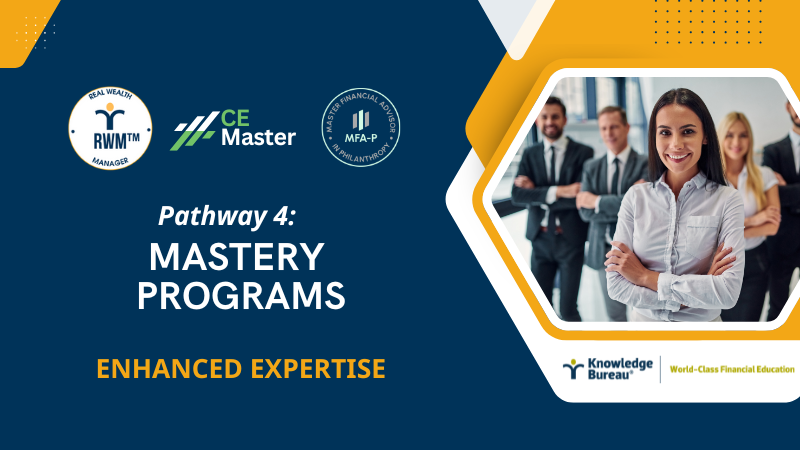Last updated: July 02 2025
Why the Low Uptake on Education Savings Plans?

Geoff Currier and Evelyn Jacks
An educated population is a prosperous one and here in Canada, families have options to save for their children's post secondary education with generous tax assistance through the Registered Education Savings Plans (RESP) and its government matching programs, the Canada Education Savings Grant (CESG) and the Canada Learning Bond (CLB). Unfortunately, the uptake on most of these programs is low, relative to the overall population, and tax accounting and financial advisors can add significant value in a society focused on a prosperous future by turning this around. Here’s the opportunity:
Understanding the Generous Matching Programs. Once an RESP account is opened, the government matching programs can begin. One matches contributions; the other requires no contribution at all!
- Canada Education Savings Grant (CESG). The Basic CESG is a 20% payment into an RESP on the first $2,500 of contributions made into the RESP each year, or up to $5,000 in contributions if sufficient carry-forward room exists. Beneficiaries are eligible until the end of the calendar year they turn 17 years old.
- Beneficiaries from families with low and middle income may also qualify for the Additional CESG. This is a payment of 10% or 20% on the first $500 of contributions made in an RESP each year on or after January 1, 2005, up to the end of the calendar year the beneficiary turns 17 years old.”
- The Canada Learning Bond (CLB). As mentioned above, the CLB begins with an initial $500 and then the government will contribute $100 per year until the year the beneficiary turns 15. Therefore the maximum CLB is $1500.
The Problem: Only 54.7% of eligible children are registered in an CESG. For CLB the uptake rate is just 43.1%.
A possible explanation for the low uptake is the complexity of the programs. There are three types of RESPs, as explained by the government, but understanding the language behind the criteria of choices is foreign, even for seasoned investors. This provides an opportunity for financial education. Here’s an example of how the plans are described:
- Individual non-family plans: only one beneficiary is named to the RESP
- Individual family plans: multiple beneficiaries may be named to the RESP, but they must all be directly related (including through adoption) to the subscriber
- Group plans: savings for many (non-family) beneficiaries of the same age group are pooled together and collectively invested by a scholarship plan dealer.
A second, and perhaps most likely, possible obstacle to a higher uptake in RESP’s is poor communication on the part of the federal government. Low-income Canadians are typically not in contact with financial planners or tax advisors and may not be aware of the existence of these programs, much less how they work. The government website indicates that contributors should be in touch with an RESP “Promoter” but showing up at the long list of head offices listed will be of no help.
The opening of an RESP requires certain information, like a social insurance number for the beneficiary and the contributor and the contributor’s address for example; not all eligible contributors may not be able to provide this.
And finally, as one might expect, family finances are likely to influence whether or not an RESP is opened for each child. Low-income families may not be in a position to make contributions to a plan if they are simply trying to make ends meet. Post secondary education might not even be a consideration. 
Tax Tip: However, as mentioned, even low income families receive access to the first deposit courtesy the federal government: a $500 Canada Learning Bond, simply by opening and RESP account at a local financial institution. . .no further investment is required!
An Effort to Improve the Uptake: In the 2024 federal Budget, the Government of Canada announced its intention to amend the Canada Education Savings Act to:
- introduce automatic enrolment in the CLB for eligible children who do not have an RESP opened for them by the time the child turns four
- Starting in 2028-29, all CLB-eligible children born in 2024 or later would have an RESP automatically opened for them and eligible CLB payments would be auto-deposited in these accounts
- To ensure that all children can benefit from this simplified process, starting in 2028-29, caregivers of eligible children born before 2024 would also be able to request that Employment and Social Development Canada (ESDC) open an RESP for their child and auto-deposit the eligible CLB payments
- extend the age from 20 to 30 years to retroactively claim the CLB
And that’s great news!
How You Can Help: If you are familiar with these plans you can educate your clients as soon as they have their first child. You can advise them of the benefits of starting a program for their children, even if the amount they can set aside is modest, or nothing at all in the first years.
Tax Tip: Simply open the RESP account, file a tax return to report your family net income, and wait for the government to start depositing the CLB if income is low.
Investment services received over 41% of CESG payments in 2023 while banking services received just over 58% of CLB payments. Your clients will need to decide for themselves which plans are most suitable. This is why getting advice from experts in the field is so important.
If you are not knowledgeable about these plans, at the very least, direct families to the people who specialize in these programs, such as financial planners, financial institutions or one of the many services in the business of establishing and managing these plans.
The Bottom Line: Sharing information about the importance of the RESP and education savings in general is a critical role of tax and financial advisors. Consider this quote from Theasu.ca:
“A high education rate reflects the progress, empowerment, social equality, economic growth, and nation-building potential of a society. . .A society with a higher education rate tends to have more equitable opportunities for all individuals, regardless of their socio-economic background. Education can break the cycle of poverty and offer equal chances for success.”
But, for most people, post secondary education is not free, and preparing for the costs associated should begin as soon as the child is brought home from the hospital.
Stay tuned weekly to Knowledge Bureau Report for continuing coverage of breaking tax and economic news and tune in to a new podcast- Real Tax News You Can Use with Evelyn Jacks: podcast@knowledgebureaureport.com
Educational Resource: Go back to your tax and financial education roots and learn more this summer with Mastery Programs!
